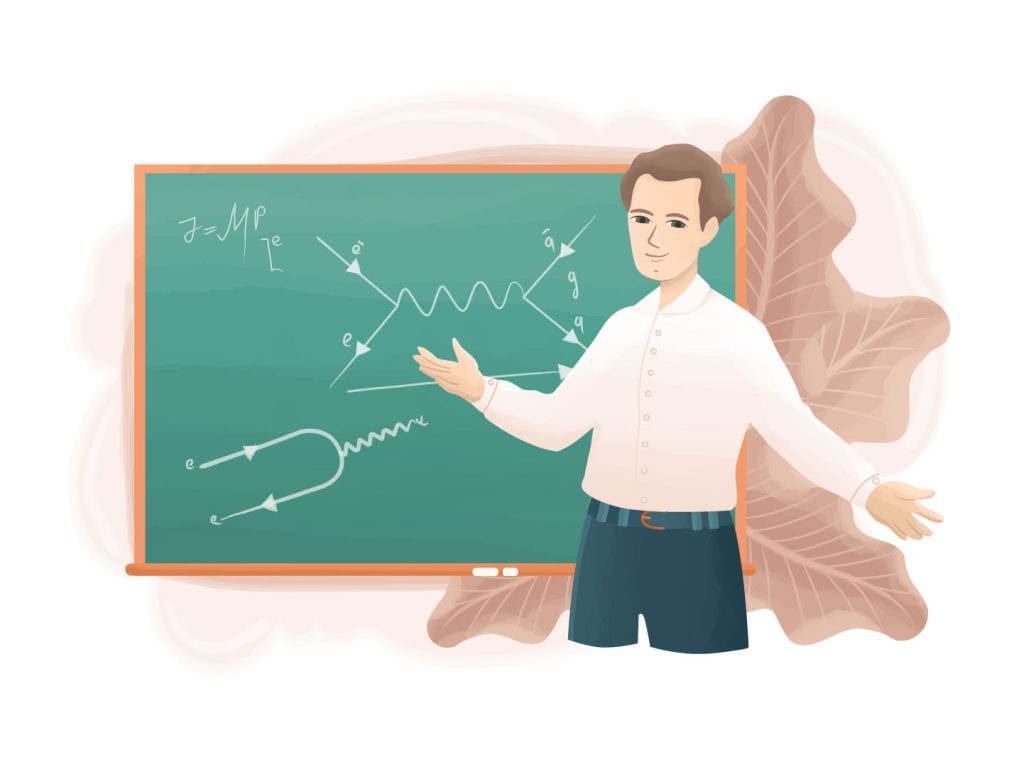
If you’ve ever memorized something to forget it the moment an exam is over, you’re not alone. That’s where the Feynman Technique to learn faster comes in; it’s more than just a study method; it’s a mindset shift. Made famous by physicist Richard Feynman, this approach catapulted him from smart scientist to legendary explainer. So grab a coffee (or chai), and let’s dig into why this technique is so powerful and how you can apply it starting today.
From Memorization to Real Understanding
Think back to your toughest concept, maybe a chemistry reaction, a math theorem, or a computer algorithm. When you “know” it, do you just repeat definitions, or can you explain why and how it works? That gap, between remembering and understanding, is where the Feynman Technique shines. It’s built on the idea that teaching something is the fastest way to learn it. Explaining ideas simply reveals the cracks in your knowledge, and repairing those cracks leads to mastery.
I remember trying this with Bayes’ Theorem in grad school. Writing it down as if explaining to a 12-year-old forced me to simplify the jargon, and suddenly it snapped into place. That’s the transformative moment I think we all need from time to time.
The Four Steps (Explained Like a Friend Would)

There are four steps in this technique, and they flow like a conversation you have with yourself, smart, clear, and humbling.
1. Pick a Concept and Write It Out
Start with a clean page and jot down the concept you’re grappling with. Write everything you know about it, definitions, formulas, examples. Use this as your baseline, your mental map.
2. Teach It in Plain Words
Now, explain the concept as if you’re teaching it to someone younger, or someone who has zero background knowledge. No jargon, no fancy terms. Just clarity. It forces you to frame the idea from scratch.
3. Spot the Gaps in Understanding
You’ll hit sentences where you’re stuck or suddenly vague. Those are key. They’re the parts that need review. Go back, study, and patch your understanding right there, on the same page.
4. Refine and Simplify
Now, rewrite that explanation even cleaner. Use analogies or real-life stories. If you can’t explain it simply, you don’t fully understand it. That’s the mantra of Feynman’s own teaching philosophy.
Repeat these steps. The idea is that learning is not linear; it’s a loop of write, teach, revise, repeat.
Why it Works: The Science Behind the Technique
The Feynman Technique isn’t just clever, it’s rooted in how our brains learn best. First, it relies on active recall, forcing you to retrieve information rather than passively highlighting, which dramatically strengthens memory. Second, by teaching it simply, you reduce cognitive load, and clarity sticks better. Third, by identifying gaps, you target your learning, rather than wasting time on parts you already know. It’s focused, not frantic.
Sound familiar? These principles echo throughout modern learning science, spaced repetition, metacognition, active learning. The Feynman Technique brings them all together elegantly.
Real-Life Examples That Make Learning Stick
Here’s how the technique shines across different subjects:
- Programming: Explain how recursion works to someone with little coding experience. You don’t just repeat the definition, you unpack the concept and why it’s powerful.
- Math: Breaking down a proof into everyday analogies clarifies each logical step.
- History: Teaching the causes of World War I in simple cause-and-effect narratives helps you understand the complex web of alliances.
One of my friends used this method to master her biology finals. She’d explain processes like respiration to her younger cousin, and burst through grades like never before. The act of teaching lit up connections in her brain she didn’t know were missing.
Tips to Make It Work For You
This method is deceptively simple, but here are a few things to make it more effective:
- Start small: Don’t attempt whole chapters, pick concepts one at a time.
- Use analogies: Turning “electric current” into “water through pipes” makes it stick.
- Write it down: Physically writing helps memory; use pen and paper if possible.
- Teach out loud: Even if you don’t have an audience, speaking makes gaps visible.
- Repeat after breaks: Review your explanation days later, if it’s unclear, repeat the process.
The repetition isn’t about busywork, it’s about deepening clarity until your explanation becomes effortless.
Building a Habit of Understanding
Make this an ongoing part of your learning, not a one-off. Every new topic you study, spend 10 minutes teaching it, on paper or to a friend. Over time, you’ll notice a shift: concepts don’t slip away as fast, and you engage material with curiosity, not dread.
The beauty of the Feynman Technique to learn faster is that it’s portable. Whether you’re prepping for exams, learning daily skills, or simply nurturing your curiosity, this method embeds clarity, confidence, and retention.
Learning Like a Scientist, Thinking Like You
Richard Feynman built his legacy not only on his scientific genius but on his uncanny ability to explain the complex in simple terms. His technique teaches us more than facts: it shows us how to learn deeply and meaningfully. As you try it yourself, you’ll realize you’re not just studying, you’re evolving as a thinker.
Would you be ready to put it to work? Pick tomorrow’s concept tonight, and teach it by morning. Break it down, talk it out, find those gaps, and then sharpen it again. That’s the Feynman magic, and it’s yours to use.
Leave a Reply